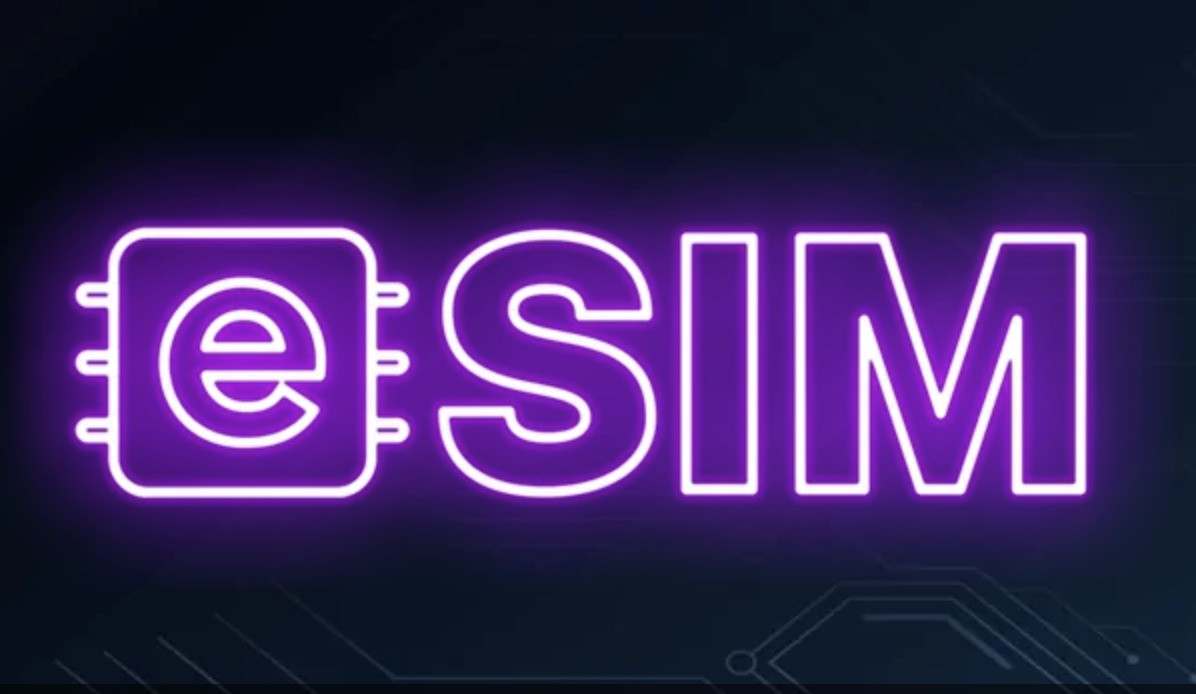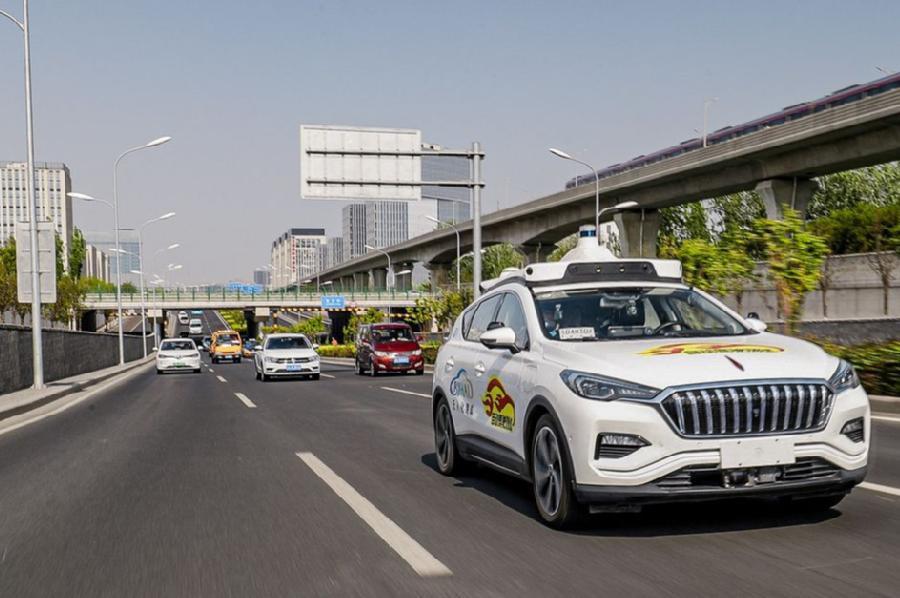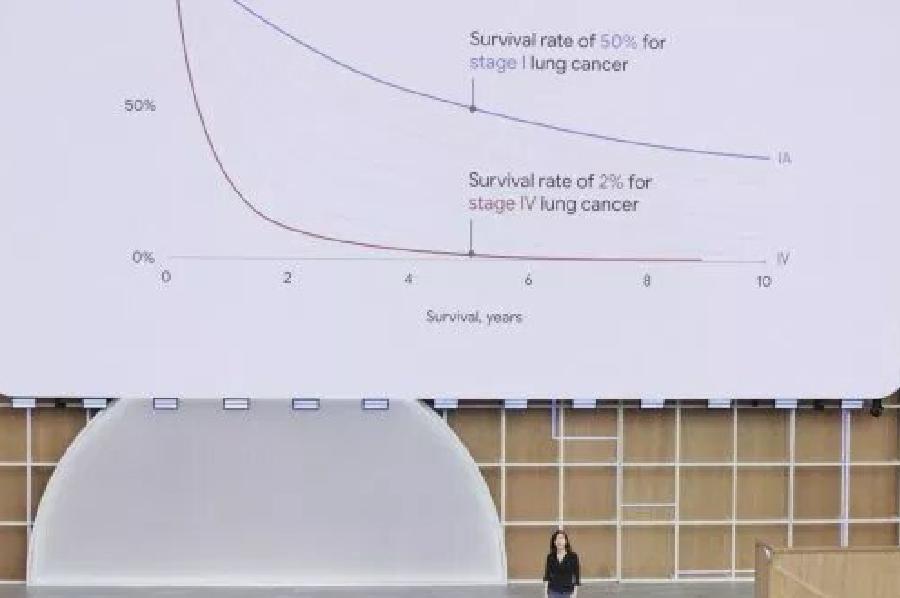We gaze into our crystal ball to see how the 2015 and 2016 iPhones will differ, as we look at the iPhone 6s and the iPhone 7
The tech space isn't that different from any other area of public interest, in that, by and large, people love a bit of gossip. It might not be as obvious, but when the coverage that gets the most reader attention is the rumours of a hot new phone coming in the next few months - regardless of whether something cool and much-anticipated just launched or not - it's pretty clear that gossip is king. No two ways about it folks, like it or not, tech site readers (that's YOU LOT), actually seem to prefer the chase and anticipation of a forthcoming phone; once a new device is release, the hype kind of trails off. Sneaky little bits of forbidden knowledge are where it's at; top secret info acquired ahead of time - you lot like to know about things before you're supposed to!
And chief amongst these interest-generating devices is anything related to Apple. Indeed, it seems part of the reason the rumour mill has become such a huge, sprawling, and proficient network of analysts, informants and insiders is largely in response to people wanting to know about the iPhone after the next one! Yes, we meant that literally; we're getting very used to hearing about new iPhone handsets projected a year or more into the future, before the currently anticipated model is even out the gate.
One of those phones used to be the iPhone SE. But that 4in badboy is now official, following its launch on March 21. As expected, the iPhone SE is a 4in phone based on the design of the iPhone 5s. It does have quite a few iPhone 6 specs inside it though so the phone isn't likely to leave you hanging.
“iPhone SE is an exciting new idea — we started with a beloved, iconic design and reinvented it from the inside out. The result is the most beautiful and powerful phone with a four-inch display in the world,” said Philip Schiller, Apple’s senior vice president of Worldwide Marketing. “iPhone SE is packed with a stunning four-inch Retina display, advanced 64-bit A9 chip with M9 motion co-processor, longer battery life, 12-megapixel iSight camera with True Tone flash, Live Photos, 4K video, faster LTE and Wi-Fi, and Touch ID with Apple Pay. Everyone who wants a smaller phone is going to love iPhone SE.”
Today we are comparing the current-gen iPhone 6s (the one released in September 2015) with 2016's as-yet unnanounced iPhone 7. (The image above is an awesome mockup by Computerbild.de of what the iPhone 7 could look like, by the way).
This is worth a look because of a few other factors. First being how unnervingly thorough, far-reaching and accurate the modern rumour mill is - nothing escapes its tendrils and already we've getting plenty of juicy information about this year's iPhone 7 since about the middle of 2015, much of it from repeatedly proven reliable sources. On top of that, Apple has likely been at work on the next iPhone–the iPhone 7–for at least a few years now.
The iPhone 6s saw a raft of major improvements in several key areas, though most notably imaging and processing power. Beyond this we saw more RAM included, 2GB to be specific, as well as slightly thicker chassis overall, owing to the inclusion of 3D Touch technology in the display panel. So while it might look A LOT like last year’s model it does function quite a bit differently.
So without further ado, let's gaze into our crystal ball to see how the current iPhone 6s will compare with this year’s iPhone 7, starting with the specs:
iPhone 6s vs Likely iPhone 7: Major Specs
Current iPhone 6s
Display: 4.7-inch and 5.5-inch 3D Touch, max res of 1920x1080
Design: Aluminum body with antenna bands on back
Storage: 16, 64, and 128GB
CPU and RAM: A9 processor, 2GB RAM
Front Camera: 5MP
Rear Camera: 12MP, 4K video recording
Ports: headphone jack, Lightning port
Likely iPhone 7
Display: 4.7-inch and 5.5-inch 3D Touch, but likely with a QHD display of 2560 x 1440 resolution
Design: Relatively same design of the iPhone 6s, though the antenna bands on the back are expected to be shifted up towards the top of the device.
Storage: 32, 64, 128, and maybe 256GB
CPU and RAM: A10 processor, 3GB RAM
Front Camera: 5MP with wide angle lens
Rear Camera: Dual lens 12MP (for the Plus model), 4K video recording, optical image stabilization.
Ports: NO headphone jack, Lightning port, Smart Connector
As far as specs go you can expect the iPhone 7 to see a new A10 processor and M10 motion-coprocessor. They’ll no doubt be an improvement over the A9/M9 found in the current iPhone 6s, but by how much, who knows? If you go by averages, you can expect about a 20% speed bump from the processor.
With the iPhone 6s Apple boosted the RAM to 2GB. There’s a chance the iPhone 7 will boast 3GB of RAM, though Apple doesn’t like making RAM upgrades every year. However, because of the lack of major design changes expected to the iPhone 7, Apple’s going to have to add some pretty good internal changes to get people to upgrade. 3GB of RAM could do the trick.
As for storage options, with the iPhone 7 we finally expect Apple to drop the 16GB entry level option for a 32GB entry level model. But what’s really interesting is the iPhone 7 could feature up to 256GB of storage space. If Apple keeps with its current 3-tier storage offerings, that means the iPhone 7 could come in 32, 128, and 256GB models.
iPhone 6s vs Likely iPhone 7: Ports
The biggest expected change to the ports of the iPhone 7 are the rumored death of the headphone jack. Instead, users will be expected to plug in their headphones via the Lightning port or use Bluetooth headphones. But if the iPhone 7 does ditch the headphone jack, it may gain a new port: the Smart Connector. Currently this Smart Connector is found on the iPad Pro like and allows smart accessories like keyboards to be attached. It’s possible Apple may be planning a mini-keyboard accessory for the iPhone 7.
iPhone 6s vs Likely iPhone 7: Design
The iPhone 7 will look almost exactly as the iPhone 6 does. Yeah, that’s a major disappointment to us too. And it’s unexpected (until multiple rumors seem to have confirmed it, anyway) as Apple has always revealed a new design every other product cycle. The only thing that is expected to be different with the iPhone 7’s design is the removal or shifting of the antenna bands that are found on the iPhone 6s.
iPhone 6s vs Likely iPhone 7: Waterproofing
Earlier this autumn the internet freaked out when videos surfaced of the iPhone 6s surviving 30 minutes underwater. It turns out Apple secretly added new adhesive strips inside the iPhone 6s to block any moisture getting in. Now a Chinese Mac blog is claiming that this was just a dry run (get the pun) for Apple, and that the iPhone 7 will officially be certified as waterproof.
In addition to waterproofing by using internal gaskets, another Chinese site is claiming Apple will ditch the aluminum casing of the iPhone 6s for an all new plastic material on the iPhone 7 to make sure the device is fully waterproof. We don’t see Apple’s iPhone 7 being a plastic phone, but only time will tell.
iPhone 6s vs Likely iPhone 7: LTE chipset
Right now the iPhone 6s uses an LTE chipset from Qualcomm, but recent rumors point to Intel working on an iPhone-compatible LTE chipset for the iPhone 7. If this is true users won’t likely notice much of a difference. Instead, Apple would use the Intel LTE chip so it can drive component costs down.
iPhone 6s vs Likely iPhone 7: Display
The iPhone 6s gained the 3D Touch display that the Apple Watch has (there, it is called the Force Touch display)–of course the iPhone 7 will adopt this 3D Touch display as well. But we also expect the iPhone 7 to get a higher resolution display, specifically a QHD one with a resolution of 2560 x 1440, as many Android handsets have. By autumn of 2016 anything less that 2560x1440 will be the equivalent of what standard definition is today.
Apple could also make subtle upgrades to the 3D Touch display in the iPhone 7–for example, making it sensitive to more than two types of pressure inputs, but other than that we don’t expect the 3D Touch display to change much.
Also, it is unlikely that the iPhone 7 will adopt an AMOLED display, which is found in Samsung phones and the Apple Watch, according to Kuo. In a recent investors note he stated:
"Based on recent comments by Minebea, one of the main iPhone backlight unit suppliers, we believe AMOLED will not penetrate iPhone for the next three years. Moreover, Hon Hai is preparing to invest in Gen-6 LTPS TFT-LCD production lines in Zhengzhou, China for mass production in 2018, suggesting the iPhone line will likely stick with TFT-LCD technology in 2018 and thereafter. […]
Minebea, major BLU supplier of iPhone, stated to investors on November 5 that it does not foresee risk of TFT-LCD share loss to AMOLED in high-end smartphone market in next three years & guides growth in TFT-LCD going forward. As Apple and Samsung are the only two brands that currently offer premium smartphones, we think Minebea’s statements imply it does not expect iPhone to adopt AMOLED in the coming three years, given that Samsung’s models are already being equipped with it."
iPhone 6s vs Likely iPhone 7: Camera
Internally the iPhone 6s gained a huge camera upgrade with its 12MP rear camera (up from the 8MP camera in the iPhone 6) and its 5MP front FaceTime camera (up for 1.8 MP in the iPhone 6). But going to the iPhone 7 we expect the camera upgrade to be less pronounced. Apple will probably keep to a 12MP rear camera but add optical image stabilization across the line (right now only the “Plus” models feature it). The iPhone 7 will also probably retain the same FaceTime camera.
The iPhone 6s also gained 4k video recording on the rear camera–something we don’t see changing or expanding on for the iPhone 7. Apple is all about refinement with its imaging technology; it doesn’t bother with arbitrary specs-wars style updates to megapixels or things like laser-guided focus. Instead, it consistently updates the core components of what make a camera good at imaging -- optics, lens-technology and software.
The company some 800 people working on the future-generations of iPhone camera technology and, for one of the first times, Apple actually allowed Charlie Rose’s film grew inside its secretive R&D labs to see how the company goes about building its iPhone. Other topics under discussion during the TV show were the iPhone, Apple’s aspirations inside the automotive industry and plenty of chatter about how the company and its teams of engineers and designers tackle new projects.
The iPhone’s camera features 200 separate individual components. Apple’s imaging design studio is so vast and complex that it can simulate almost every condition imaginable in order to test out the camera technology before it goes to production. Take the iPhone 6s Plus’ imaging prowess, for example. It is pretty much unparalleled in the mobile space at the moment, according to a raft of AV review and testing sites.
Despite all that, there’s not many rumors regarding the megapixels of the cameras in the iPhone 7. After all, the iPhone 6s each got a big boost from the iPhone 6. The 6s got a 5MP front camera upgrade and a 12MP rear camera upgrade. It’s possible the iPhone 7 will keep the same megapixel lenses.
However, the iPhone 7 is expected to get one major camera upgrade: a dual lens rear camera. This would mean there would be TWO 12MP cameras on the back of the device which will take insanely detailed pics. the bad news is that this dual lens system is rumored to be limited to the iPhone 7 Plus, sadly.
iPhone 6s vs iPhone 7: A Detailed Look At All The Rumours
VS Michael Grothaus 17:38, 4 May 2016
FACEBOOK
TWITTER
GOOGLE+
We gaze into our crystal ball to see how the 2015 and 2016 iPhones will differ, as we look at the iPhone 6s and the iPhone 7
The tech space isn't that different from any other area of public interest, in that, by and large, people love a bit of gossip. It might not be as obvious, but when the coverage that gets the most reader attention is the rumours of a hot new phone coming in the next few months - regardless of whether something cool and much-anticipated just launched or not - it's pretty clear that gossip is king. No two ways about it folks, like it or not, tech site readers (that's YOU LOT), actually seem to prefer the chase and anticipation of a forthcoming phone; once a new device is release, the hype kind of trails off. Sneaky little bits of forbidden knowledge are where it's at; top secret info acquired ahead of time - you lot like to know about things before you're supposed to!
And chief amongst these interest-generating devices is anything related to Apple. Indeed, it seems part of the reason the rumour mill has become such a huge, sprawling, and proficient network of analysts, informants and insiders is largely in response to people wanting to know about the iPhone after the next one! Yes, we meant that literally; we're getting very used to hearing about new iPhone handsets projected a year or more into the future, before the currently anticipated model is even out the gate.
One of those phones used to be the iPhone SE. But that 4in badboy is now official, following its launch on March 21. As expected, the iPhone SE is a 4in phone based on the design of the iPhone 5s. It does have quite a few iPhone 6 specs inside it though so the phone isn't likely to leave you hanging.
“iPhone SE is an exciting new idea — we started with a beloved, iconic design and reinvented it from the inside out. The result is the most beautiful and powerful phone with a four-inch display in the world,” said Philip Schiller, Apple’s senior vice president of Worldwide Marketing. “iPhone SE is packed with a stunning four-inch Retina display, advanced 64-bit A9 chip with M9 motion co-processor, longer battery life, 12-megapixel iSight camera with True Tone flash, Live Photos, 4K video, faster LTE and Wi-Fi, and Touch ID with Apple Pay. Everyone who wants a smaller phone is going to love iPhone SE.”
Today we are comparing the current-gen iPhone 6s (the one released in September 2015) with 2016's as-yet unnanounced iPhone 7. (The image above is an awesome mockup by Computerbild.de of what the iPhone 7 could look like, by the way).
This is worth a look because of a few other factors. First being how unnervingly thorough, far-reaching and accurate the modern rumour mill is - nothing escapes its tendrils and already we've getting plenty of juicy information about this year's iPhone 7 since about the middle of 2015, much of it from repeatedly proven reliable sources. On top of that, Apple has likely been at work on the next iPhone–the iPhone 7–for at least a few years now.
The iPhone 6s saw a raft of major improvements in several key areas, though most notably imaging and processing power. Beyond this we saw more RAM included, 2GB to be specific, as well as slightly thicker chassis overall, owing to the inclusion of 3D Touch technology in the display panel. So while it might look A LOT like last year’s model it does function quite a bit differently.
So without further ado, let's gaze into our crystal ball to see how the current iPhone 6s will compare with this year’s iPhone 7, starting with the specs:
iPhone 6s vs Likely iPhone 7: Major Specs
Current iPhone 6s
Display: 4.7-inch and 5.5-inch 3D Touch, max res of 1920x1080
Design: Aluminum body with antenna bands on back
Storage: 16, 64, and 128GB
CPU and RAM: A9 processor, 2GB RAM
Front Camera: 5MP
Rear Camera: 12MP, 4K video recording
Ports: headphone jack, Lightning port
Likely iPhone 7
Display: 4.7-inch and 5.5-inch 3D Touch, but likely with a QHD display of 2560 x 1440 resolution
Design: Relatively same design of the iPhone 6s, though the antenna bands on the back are expected to be shifted up towards the top of the device.
Storage: 32, 64, 128, and maybe 256GB
CPU and RAM: A10 processor, 3GB RAM
Front Camera: 5MP with wide angle lens
Rear Camera: Dual lens 12MP (for the Plus model), 4K video recording, optical image stabilization.
Ports: NO headphone jack, Lightning port, Smart Connector
As far as specs go you can expect the iPhone 7 to see a new A10 processor and M10 motion-coprocessor. They’ll no doubt be an improvement over the A9/M9 found in the current iPhone 6s, but by how much, who knows? If you go by averages, you can expect about a 20% speed bump from the processor.
With the iPhone 6s Apple boosted the RAM to 2GB. There’s a chance the iPhone 7 will boast 3GB of RAM, though Apple doesn’t like making RAM upgrades every year. However, because of the lack of major design changes expected to the iPhone 7, Apple’s going to have to add some pretty good internal changes to get people to upgrade. 3GB of RAM could do the trick.
As for storage options, with the iPhone 7 we finally expect Apple to drop the 16GB entry level option for a 32GB entry level model. But what’s really interesting is the iPhone 7 could feature up to 256GB of storage space. If Apple keeps with its current 3-tier storage offerings, that means the iPhone 7 could come in 32, 128, and 256GB models.
iPhone 6s vs Likely iPhone 7: Ports
The biggest expected change to the ports of the iPhone 7 are the rumored death of the headphone jack. Instead, users will be expected to plug in their headphones via the Lightning port or use Bluetooth headphones. But if the iPhone 7 does ditch the headphone jack, it may gain a new port: the Smart Connector. Currently this Smart Connector is found on the iPad Pro like and allows smart accessories like keyboards to be attached. It’s possible Apple may be planning a mini-keyboard accessory for the iPhone 7.
iPhone 6s vs Likely iPhone 7: Design
The iPhone 7 will look almost exactly as the iPhone 6 does. Yeah, that’s a major disappointment to us too. And it’s unexpected (until multiple rumors seem to have confirmed it, anyway) as Apple has always revealed a new design every other product cycle. The only thing that is expected to be different with the iPhone 7’s design is the removal or shifting of the antenna bands that are found on the iPhone 6s.
iPhone 6s vs Likely iPhone 7: Waterproofing
Earlier this autumn the internet freaked out when videos surfaced of the iPhone 6s surviving 30 minutes underwater. It turns out Apple secretly added new adhesive strips inside the iPhone 6s to block any moisture getting in. Now a Chinese Mac blog is claiming that this was just a dry run (get the pun) for Apple, and that the iPhone 7 will officially be certified as waterproof.
In addition to waterproofing by using internal gaskets, another Chinese site is claiming Apple will ditch the aluminum casing of the iPhone 6s for an all new plastic material on the iPhone 7 to make sure the device is fully waterproof. We don’t see Apple’s iPhone 7 being a plastic phone, but only time will tell.
iPhone 6s vs Likely iPhone 7: LTE chipset
Right now the iPhone 6s uses an LTE chipset from Qualcomm, but recent rumors point to Intel working on an iPhone-compatible LTE chipset for the iPhone 7. If this is true users won’t likely notice much of a difference. Instead, Apple would use the Intel LTE chip so it can drive component costs down.
iPhone 6s vs Likely iPhone 7: Display
The iPhone 6s gained the 3D Touch display that the Apple Watch has (there, it is called the Force Touch display)–of course the iPhone 7 will adopt this 3D Touch display as well. But we also expect the iPhone 7 to get a higher resolution display, specifically a QHD one with a resolution of 2560 x 1440, as many Android handsets have. By autumn of 2016 anything less that 2560x1440 will be the equivalent of what standard definition is today.
Apple could also make subtle upgrades to the 3D Touch displa
Ən son xəbərlər
YENİ
- 08:08 Robot taksilər təhlükəsizlik sürücüləri olmadan fəaliyyətə başlayacaq
- 21:37 SpaceX Starlink Layihəsini davam etdirir
- 12:40 Koronavirusun yayılması ilə gəlirlərini daha çox artıran şirkətlər
- 11:51 267 milyon Facebook istifadəçisinin məlumatları satışa çıxarıldı
- 06:01 Google-un süni intellekti xərçəngi müalicə edəcək!
- 07:09 Apex Legends video oyun tarixində yeni bir rekorda imza atdı









